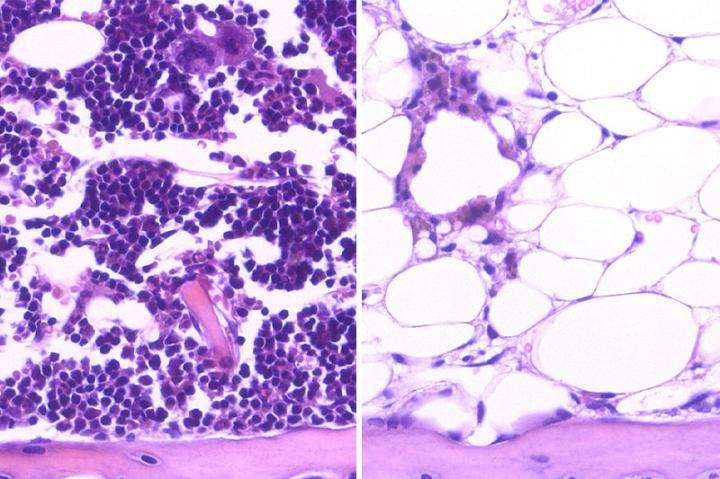Genetic factors control regenerative properties of blood-forming stem cells

Researchers from the UCLA Department of Medicine, Division of Hematology Oncology and the Eli and Edythe Broad Center of Regenerative Medicine and Stem Cell Research at UCLA have published two studies that define how key genetic factors affect blood-forming stem cells by either accelerating or hindering the cells' regenerative properties. The findings could one day lead to improved treatments for people undergoing common therapies for cancer such as chemotherapy and radiation.
Blood-forming stem cells, or hematopoietic stem cells, are found in the bone marrow. These cells have two unique properties: They can self-renew and, through a process called differentiation, they can form any type of blood cell. A healthy immune system depends on the regenerative abilities of hematopoietic stem cells.
Common cancer therapies such as chemotherapy and radiation can eliminate cancer by killing cancer cells. But these treatments also damage hematopoietic stem cells, which can impede the cells' ability to regenerate blood, slowing the immune system and resulting in a longer, more complicated recovery for people with cancer. Previous research indicated that certain genes may alter hematopoietic stem cells' regenerative capacity by either accelerating or hindering the cells' ability to restore the immune system, but more research was needed to pinpoint the specific genetic activity and effects.
One of the new studies focused on a gene called Grb10 that is expressed by hematopoietic stem cells. Grb10's function was previously not known, so to better understand its role, the scientists deleted Grb10 from hematopoietic stem cells in lab dishes and in mice that had received radiation. They found that deleting Grb10 strongly promotes hematopoietic stem cell self-renewal and differentiation.
In the other study, researchers analyzed a protein called DKK1. DKK1 is produced by a gene expressed by a specific "bone progenitor" cell that is present in the "niche," or cellular environment, that surrounds the hematopoietic stem cell. Typically, bone progenitor cells regenerate bone, but scientists had previously hypothesized that these cells also play an important role in regulating hematopoietic stem cells' ability to self-renew and differentiate into other blood cells.
"The cellular niche is like the soil that surrounds the stem cell 'seed' and helps it grow and proliferate," said Dr. John Chute, professor of medicine in the Division of Hematology Oncology in the UCLA David Geffen School of Medicine and the study's senior author. "Our hypothesis was that the bone progenitor cell in the niche may promote hematopoietic stem cell regeneration after injury."
The researchers showed that adding DKK1 to hematopoietic stem cells in lab dishes and mice that had received radiation produced a cascade effect within the cell niche that greatly enhanced hematopoietic stem cells' ability to self-renew and differentiate into other blood cells.
Taken together, the studies uncover two molecular mechanisms that could potentially be manipulated to increase the regenerative properties of hematopoietic stem cells and improve cancer therapy. Scientists can now test drugs that inhibit Grb10 or test the effectiveness of administering DKK1 intravenously to promote immune regeneration in people who have received chemotherapy and radiation or those undergoing bone marrow transplants.
More information: Xiao Yan et al, Deletion of the Imprinted Gene Grb10 Promotes Hematopoietic Stem Cell Self-Renewal and Regeneration, Cell Reports (2016). DOI: 10.1016/j.celrep.2016.10.025



















